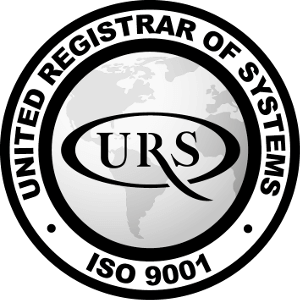 |
|
Communications Radio HF
Emetteur-Récepteur
Barrett 2030 HF SSB
Ce produit n'est plus disponible. |
|
Caractéristiques - Configurations - Spécifications
Emetteur-récepteur Barrett 2030
- Emetteur-récepteur HF robuste
- 1,6 MHz à 30 MHz, tous les modes, 125 W PEP puissance de sortie RF
- 30 canaux programmables et Selcall équipé en standard
- Installation rapide mobile ou station fixe
- Utilisation intuitive "facilité d'utilisation"
- Options TELCALL et sécurité de voix
L'émetteur-récepteur Barrett 2030 HF est un ajout à la gamme éprouvée d'émetteurs-récepteurs HF Barrett pour les clients qui ne nécessitent pas certaines des fonctionnalités
les plus avancées offertes par l'émetteur-récepteur 2050.
|
 |
| Standards |
Exceeds/complies with Australian/ New Zealand standard AS/NZS 4770:2000 and AS/NZS 4582:1999
Exceeds/complies with European standard
ETSI 300 373 and associated Amendment A
Exceeds/complies with EMC and vibration standard IEC 945
Complies with MIL-STD 810G for drop, dust, temperature, shock and vibration |
| Transmit frequency range |
1.6 MHz to 30 MHz (continuous) |
| Receive frequency range |
250 kHz to 30 MHz (continuous)* |
| Channel capacity |
Up to 30 programmable channels (simplex or semi-duplex) |
| Frequency resolution |
10 Hz program mode
1 Hz tunable receiver |
| Frequency stability |
±10 Hz or better than 0.3 ppm over temperature range -30°C to +70°C |
| Operating modes |
J3E (USB, LSB) - H3E (AM) - J2A (CW) - J2 (AFSK) Optional J2B (AFSK) with narrow filter |
| Operating temperature |
-30°C to +70°C humidity 95% relative, non-condensing |
| Supply voltage |
13.8 V DC +20% / -10% (negative ground) polarity protected.
Over voltage protected. 100 to 260 VAC or 11 to 16 V DC with power supply |
| Current consumption |
470 mA standby (muted, back lighting off) |
| Selcall system |
Based on CCIR 493-4, four and six digit systems. Protocol available for free distribution.
Fully compatible with other major HF manufacturers' four and six digit systems including encrypted systems |
| Switching speed |
Less than 15 mS Tx to Rx, Rx to Tx |
| Sensitivity |
-120 dBm (0.224 uV) for 10 dB SINAD - J3E Mode pre-amp on
-110 dBm (0.708 uV) for 20 dB SINAD - J3E Mode pre-amp off |
| Selectivity J3E |
-1 kHz and + 4 kHz better than 50dB
-2 kHz and +5 kHz better than 55dB
-5 kHz and +8 kHz better than 60dB |
| Selectivity J2B (optional) |
-500 Hz and +500 Hz better than 60 dB The level of an unwanted signal above the level of a wanted signal
that will reduce the SINAD of the wanted signal from 20 dB SINAD to 14 dB SINAD |
| Blocking |
-20 kHz and +20 kHz better than 71 dB - The level of an unwanted signal above the level of a wanted signal
that will reduce the SINAD of the wanted signal from by 6 dB or cause and output level change of 3 dB |
| Intermodulation |
Better than 89 dBµV - The level of two unwanted signals, that are within 30 kHz.of the wanted signal,
above the level of a wanted signal that reduces the SINAD of the wanted signal to 20 dB |
| Spurious response ratio |
Better than 70 dB |
| Reciprocal mixing |
Better than 105 dBµV |
| In-band IMD |
Better than 34 dB |
| Audio output |
4 W into 4 ohm at less than 2% distortion |
| Audio response |
Less than 6 dB variation from 350 Hz to 2700 Hz. |
| Input protection |
Better than 30 V RMS from a 50 Ohm source |
| RF output power |
125 W PEP voice ±1.5dB
or 30 W PEP voice ±1.5dB
or 10 W PEP voice ±1.5dB |
| Duty cycle |
100% two-tone input signal with fan option |
| Intermodulation Products |
better than -31 dB below PEP (25 dB below two tone peak) |
| Audio frequency response |
Less than 6 dB variation 350 Hz to 2750 Hz |
| Current consumption |
Voice average less than 9 Amps typical
Two tone less than 12 Amps typical |












